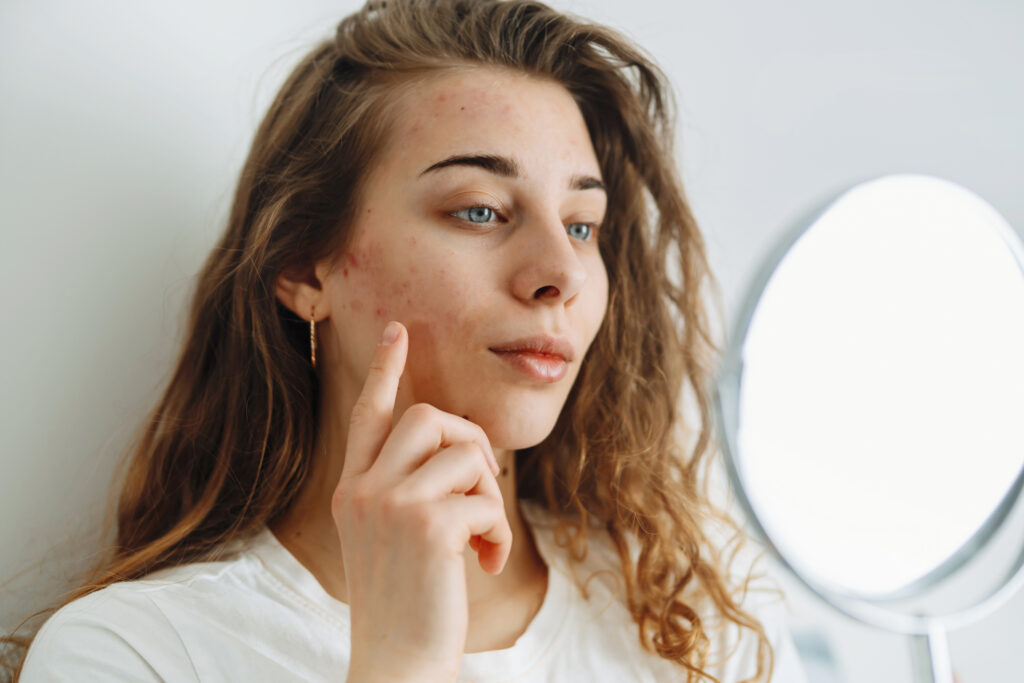What’s the Difference Between Skin Purging and a Breakout?
What is skin purging?
If you are on social media, you have no doubt heard of skin purging, but what does it mean? Skin purging is a temporary response to an active ingredient that speeds cell turnover, and it results in a breakout. In other words, when you use certain products, your skin is likely to look worse before it looks better. A purge can look like blackheads and whiteheads, and it’s likely to appear in the places where you normally break out.
How is this different from a breakout?
In some cases, there was a breakout waiting to happen under your skin, and speeding the cell turnover made it happen more quickly. A purge is a temporary response to specific ingredients, found in products like retinoids and chemical exfoliants, that push clogged pores to the surface of your skin. Think about when you clean out a closet. You have to deal with a mess before the closet gets organized, right? It’s the same thing with your skin. While the product is working on improving your skin, you may have to power through a purge.
How can you tell which is which?
While a purge can look like whiteheads or blackheads, it won’t look like tiny red bumps. If you notice these, are experiencing dry patches, or your skin is stinging and feels sensitive, it’s not a purge, it’s irritation. It could be that your skin needs time to adjust to the new product, but if the irritation lasts, it could also be that the product is too harsh for your skin. If it looks like an acne breakout, consider that possibility. Certain new products can cause a purge, including retinoids, alpha and beta hydroxy acids (AHAs and BHAs), benzoyl peroxide, azelaic acid, and enzymes like bromelain or papain. Other products should not cause your skin to purge, including vitamin C, peptides, growth factors, hyaluronic acid, antioxidants, ceramides, and niacinamide. If the new product contains ingredients unlikely to cause a purge, what you’re experiencing is probably a breakout.
What can you do to help your skin?
The best thing to do when you’re working a new product into your skincare routine is to ease into it slowly. Try using just a little bit of the new product, every third night for a month, then every other night for a month, and so on, to make sure it’s well tolerated. Pay attention to the products you’re using, making note of issues you’ve had with products in the past so that you don’t use ingredients that are not compatible with your complexion. If you experience a purge, expect it to last a few weeks. During that time, keep your skin hydrated, don’t pick at it, and protect it from the sun until the purge subsides. If it lasts longer than a few weeks, or causes significant changes or pain to your skin, discontinue the product and make an appointment with your dermatologist.
Skin Care Solutions from Swinyer-Woseth Dermatology
If you’re looking for a dermatologist to help you care for your skin, Swinyer-Woseth Dermatology is committed to providing superior, professional hair and skin care in a manner that’s practical, efficient, and compassionate. With over 30 years of experience providing dermatological services in Salt Lake City, we provide a variety of services, from cosmetic skincare to treatment for skin cancer. Our team of board-certified dermatologists and licensed cosmetic service providers are here to provide you the care you need in a comfortable, professional atmosphere. Call (801) 682-4715 or contact us through our website.

